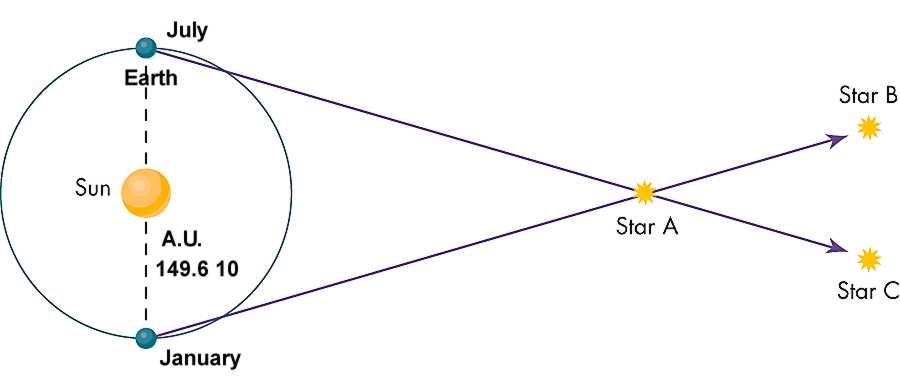How do astronomers determine stellar parallax?
2 Answers
By measuring parallax using sophisticated instruments.
Explanation:
Astronomers use an effect called parallax to measure distances to nearby stars. Parallax is the apparent displacement of an object because of a change in the observer's point of view. For this, the observer moves between the two positions to view same object, between, object would appear to move against the background.
Taken from here.
For measuring a star's distance using sophisticated instruments, astronomers position it once, and then again 6 months later (against far more distant stars), when earth has moved on the opposite side of its orbit and calculate the apparent change in position. See figure below.

The star's apparent motion is called stellar parallax. The distance
It is apparent that
So a distance of one parsec is one at which earth's orbit subtends an angle of one arc second and distance of two parsecs is one at which earth's orbit subtends an angle of half of an arc second. A parsec is equal to about 3.26 light-years
Imagine that you observe the star twice in an interval of half a year. The angle between the directions is the star parallax.
Explanation:
Choosing diametrically opposite positions in the Earth's orbit is a matter of convenience.
Closer the positions, the precision has to be higher in the instrument used..For this choice, the in-between distance of observer is between 1.991 AU and 2 AU.
If equinoxes are chosen, the distance in-between Earth's orbital positions will be very close to 2 AU.
Explication:
If the parallax angle is 0.8", the star distance in AU, from the Sun, is cot (parallax/2) = cot (.4") = 515662 AU = 8.2 ly, nearly.
Distance from the observer = cosec (parallax/2) = 515662 AU = 8.3 ly. The difference is very small.
The parallax isosceles triangle is used for getting these formulas.

